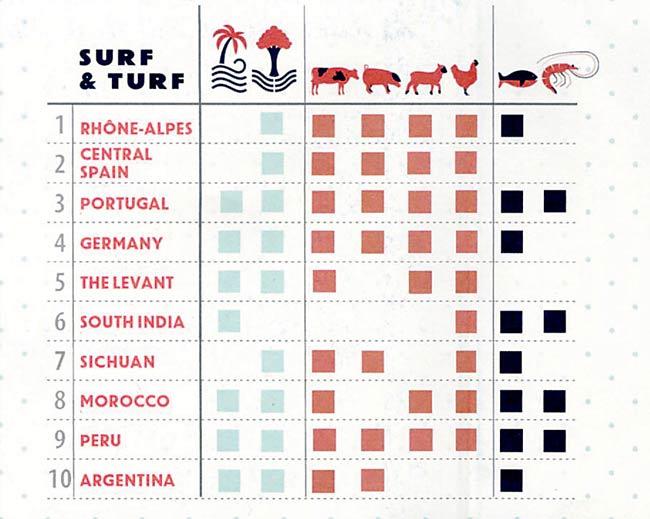Mina Holland takes the reader on a gastronomical trip around the world that celebrates 39 world cuisines laced with literary interludes, to whip up a delish mix of food, travel and books

Mina Holland
Q. How and why did you decide on a world cuisine guide/cookbook?
A. I selected a balance of the cuisines I deemed most “important” (or classic), places I had visited and know well. I wanted to achieve a good cross section of world cuisines, representing the different flavours, ingredients and techniques used across each continent. This couldn't be exhaustive, but more of an overview — the big picture.

Mina Holland loves to read fiction and poetry. illustrations courtesy/Pete Adlington, Map courtesy/Liane Payne
ADVERTISEMENT
There were the obvious cuisines I needed to cover, like France, Spain, Italy, India and China. But to capture any of these in one chapter wouldn’t have been impossible, it would’ve been inaccurate — such is the enormous regional variation in each. So I divided these into regions. I’ve included North and South India, for example, which is still pretty big in scope, but it at least encapsulates the broad differences between how people cook and eat in the north and south of the country according to the geographical, climatic, and cultural conditions.

The book jacket opens into a fascinating, foodie version of an atlas
Q. Why the number 39?
A. I was initially unsure about the number 39 — I thought it might be a little arbitrary! But I like it now — it seemed silly to round it up to 40 for the hell of it. I wrote a British chapter for foreign markets, which hasn’t been included in the UK edition...so in a sense it is 40 cuisines, even if this isn’t written on the front cover.

Q. Wasn’t it an overwhelming...?
A. Yes! It was a daunting undertaking, but I realised that nothing like it existed. In the cookery books’ market, there is tremendous enthusiasm for geographically-specific cookbooks (like Yottam Ottolenghi’s Jerusalem), or books by celebrity chefs pushing their own original creations — often fusing different national cuisines. I wanted to condense the crucial information about what defines those 39 cuisines I chose, and put that information all into one place. Because they are national and/or regional cuisines, the atlas format was fitting. It isn’t an atlas in the conventional sense; of course, it’s a piece of food writing, with recipes and maps — it’s reinventing the atlas format, and perhaps the conventional format of food books, as well.
Q. What were some of the stumbling blocks? Which region/country was most difficult to narrow down into a section?
A. California was a challenge because, it’s such a “recent” cuisine and, by its very nature, so derivative of other cuisines. It is the odd one out because there’s an element of fusion about it — but this is such a defining feature of Californian food, and I felt close to the cuisine because of having lived there, that I was keen to include it.
When you’re covering so many cuisines in limited space, you always worry that you’re not doing them justice — especially those with many tiny regional variations — like in India. I’d be lying if I said any of the book wasn’t difficult to write — but then again, it was a rewarding and enjoyable process at the same time.
Q. The literature connect is integral to every section. Tell us about this.
A. The Laurie Colwin quote at the front of the book as well as my introduction emphasise my belief that food gives us huge insight into a culture. I tried to pick quotes from literature — itself an important cultural medium — that highlight food’s role in each of the territories covered. I read a lot of fiction and poetry — along with cookery it is one of the things I love most. In some sense, this is like masterfully combining ingredients to delicious effect in cookery. It feels natural to marry food and literature — they complement each other. I often remember, for example, what characters in novels eat far better than any other details.
The Edible Atlas, Mina Holland, Canongate (distributed by Random House), Rs 799. Available at leading bookstores.
 Subscribe today by clicking the link and stay updated with the latest news!" Click here!
Subscribe today by clicking the link and stay updated with the latest news!" Click here!







